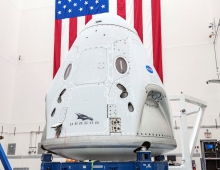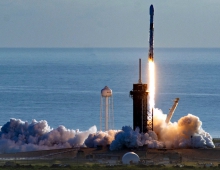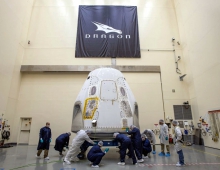
World's Most Powerful Rocket Sends Tesla to Mars
Elon Musk's SpaceX Falcon Heavy took off from Pad 39A at the Kennedy Space Center in Florida, on Feb. 6, a major milestone in the company's quest to grow its customer base.
The rocket took off and will attampt to deliver its test payload - a cherry red Tesla Roadster sports car - into an Earth-Mars elliptical orbit around the sun.
Until now, SpaceX send smaller vehicles such as the Falcon 9 to space in order to deliver commercial satellites. The Falcon Heavy is a larger, reusable launch vehicle that will allow the company to bid on heavier payloads.
With the ability to lift into orbit nearly 64 metric tons (141,000 lb)---a mass greater than a 737 jetliner loaded with passengers, crew, luggage and fuel--Falcon Heavy can lift more than twice the payload of the next closest operational vehicle, the Delta IV Heavy, at one-third the cost.
Its first stage is composed of three Falcon 9 nine-engine cores whose 27 Merlin engines together generate more than 5 million pounds of thrust at liftoff, equal to approximately eighteen 747 aircraft. Only the Saturn V moon rocket, last flown in 1973, delivered more payload to orbit. Falcon Heavy was designed from the outset to carry humans into space and restores the possibility of flying missions with crew to the Moon or Mars.
Following the launch, SpaceX re-landed multiple rocket cores back on earth. Two touched down on land, and the plan for the third was for it to settle back on an unmanned drone ship in the Atlantic Ocean.





















